Buck Throckmorton displays his impeccable taste in music with a vid of Dwight Yoakam doing a too-short greatest-hits medley on the Grand Ole Opry stage. It is indeed some mighty fine stuff, gooder’n grits and redeye gravy. Unfortunately, though, Dwight somehow failed to include my own personal fave on the setlist, an instant classic called “The Distance Between You And Me.” Please allow me to rectify this oversight.
Buck thoughtfully tosses a little bonus verbiage into the mix.
Ain’t no arguing with that sentiment. Funny thing is, though, that ole Dwight chose to work with both a standup and a Fender bass in the video. I have no idea why; the only other time I can recall seeing anybody using two bass players onstage was when the Playboys opened for Little Richard in NYC: the experienced old road-dog Richard had been using since the late 60s pumping out those sweet licks in the old-school way over on Stage Left, and a much younger Young Turk thumping and popping and slapping some more contemporary Fo’ Da Peepuls funkitudeadelicalicity at Stage Right.
The setup seemed to work well enough to suit Richard’s purposes as the Architect of Rock and Roll, yes. But generally speaking, if you have the fat, round, full-throated sonic ooooomph!! of an upright making your point for you onstage, you have no need of the thinner, midrangey, somewhat nasal skrooonk! of an electric too. Next to a properly mic’ed and/or amplified standup, the electrical whippersnapper is just pointless and superfluous and really needs to get the hell off my lawn.
Plus, you’re padding the payroll unneccessarily by taking on a spare bass player you don’t need—paying for extra meals, extra booze, extra hotel rooms, and assorted other extra goods and services which personal experience tells me you damned well can’t afford.
Then there’s having to help your redundant bassman wrangle his gear into the band van…and believe you me, those Hugh Jass™ Ampeg 8×10 “refrigerator” cabs insisted on by every discerning bass player who has clawed his way up to the less-cramped stages and overly-muscled stagehands characteristic of the midsized-venue circuit are fucking HEAVY, no joke. Topped by an early-70s all-tube SVT head and we’re talking between three and four hundred pounds of bottom-end rumble to lug around, which adds up to some serious no-fun for all involved parties. Nothing else sounds better, or anything like as good. But nothing else is a bigger ass-ache to have to deal with night after night after night out on the road.
When you’re listening to the intoxicating sound an Ampeg SVT rig produces, you love that infernal beast more than the soft, sweet coo of your peacefully-slumbering child. When you’re trying to work your freshly-mangled hand out from under it, or you and three of your least-svelte buds are struggling to manhandle the thing up a staircase lengthy enough to accommodate the takeoff roll of an Antonov An 225 which leads up to the loft in which tonight’s venue is situated, there’s nothing and no one you’ve ever hated worse. Ask me how I know. Go ahead, I dare ya.
Remembering how Dwight Yoakam crashed the country music charts in the late 1980s with raw, retro-country gives me hope that there will someday be another Dwight emerge with a retro-sound that breaks the hold of bro-country/tailgate-rap on modern country music.
We can only hope so. Retro? Fine and dandy, I gots no nits to pick there, either. But what Dwight really was, was a living, loving tribute to the game-changing Bakersfield Sound pioneered by the legendary country artists Buck Owens, Merle Haggard, and Billy Mize, among others. Yoakam was personally close to and did a goodish bit of studio work with Owens, proudly acknowledging his Bakersfield affiliations with 1988’s chart-topping duet with his friend Buck, “Streets Of Bakersfield.” Owens had recorded the song back in 1973 his own self, which quickly died the death upon its release. As is remarkably common in country music, a wonderful backstory comes along with the song.
Homer Joy, the song’s writer, was approached in 1972 by representatives from Buck Owens’ studio in Bakersfield, California, about recording a “Hank Williams Sr. soundalike-album”. Joy initially refused, saying “I don’t want be like Hank, I just want to be me!” Eventually, he agreed to come in and record it, on the condition that he would also get to record some of his own songs as well. After the recording, however, the studio manager told Joy that he’d forgotten that the Buckaroos (Buck Owens’ band) were practicing for an upcoming tour, and that Joy would have to wait to record his original songs.
Refusing to back down, Joy would show up at the studio at 8 AM every morning, only to be told that the Buckaroos were busy and that he would still have to wait. One night, Joy decided to take a walk around downtown Bakersfield, only to have the brand-new cowboy boots he’d been wearing give him blisters all over his feet: “I barely made it back to the car, and on top of that, I was still upset about everything, and I went back to my hotel room and wrote ‘Streets of Bakersfield’.”
As usual, Joy went to the studio at 8 AM the following morning, and the studio manager, out of frustration, grabbed a guitar off of the wall and gave it to Joy, saying, “Sing me one of the songs that you’d record if we could get some time to record it.” As kind of an “in-your-face” gesture, Joy performed his eight-hour-old “Streets of Bakersfield”. Afterward, the studio producer went into the back of the studio, brought out Buck Owens, and had Joy play it again. Owens then said to the manager, “The Buckaroos have the day off, but you call them and tell them that we’re going to do a recording session on Homer this afternoon.”
Buck Owens released a recording of the song in 1973, and while that version wasn’t a major hit, the re-recording he did with Dwight Yoakam in 1988 (with slightly changed lyrics) reached #1 on the Billboard Country Music charts.
That 1988 revisit to the Number One spot was the first for Buck Owens since 1972. Here t’is:
Two things to look out for here: one, the brilliant, fluid guitar stylings of Yoakam’s longtime partner, producer, and behind-the-scenes mastermind, the seriously gifted Pete Anderson; and 2) the always-understated presence onstage of Flaco Jiminez, King of Tex-Mex accordion. When it comes to putting a smile on the faces of his audience, I can honestly say I’ve never been able to watch one of Flaco’s joyous, open-hearted performances without grinning like a mule eating briars.
Flaco got his first big break in the 60s when he landed a regular gig with Doug Sahm, a founding member of the Sir Douglas Quintet (“She’s About A Mover,” featuring a pitch-perfect Vox organ hook from Augie Meyers). Flaco worked with Sahm for years, stepping out to bebop around on his own hook before eventually reuniting with Sahm in the Texas Tornadoes, also sharing stages with fellow music icons Augie Meyers and Freddie Fender.
Good stuff, no? Almost all of those guys are long gone; it saddens me to think that, after bringing so much happiness to so many people, they should be all but forgotten nowadays, fringe weirdos like myself being the ever-lonelier exceptions. I’ll leave you with one last nugget of “Behind The Music” trivia before signing off for the night.
The Cadillac with an upright bass strapped on top of it always brought me a smile in Dwight’s official video for “Guitars, Cadillacs.”
Didn’t bring very many of ’em to Elvis Presley’s original standup bass player, Bill Black. For Elvis, Bill, and Scotty Moore, the hitch-hiking bass wasn’t just a photo shoot, it was everyday life. The boys spent a good chunk of 1955 actually hauling Bill’s doghouse bass around on the roof of Elvis’s newly-acquired pink Caddy (don’t miss the incredibly rare pictures at the link!), which Bill didn’t like even a little bit—all the moreso since he had to hang his arm out the window and hold onto the neck of his fragile, expensive instrument so’s a sudden gust wouldn’t rip the bass up, up, and away, transmogrifying Bill’s pride and joy into so much kindling wood strewn across the Tennessee blacktop. Black disliked his admittedly unappealing circumstances enough as it was, the bitterness and envy at having been eclipsed by Elvis as the star of the show which would torment him for the rest of his abbreviated life already beginning to rankle*.
As you might well imagine, he was absolutely beside himself with rage whenever those April showers came their way.
*In Bill’s opinion, being rudely elbowed out of the spotlight and into supporting-player status was an entirely unfair and ill-considered error in judgment, a mistake which could only damage the combo’s career prospects. From practically the moment the ink had dried on Elvis’ signature on his contract with RCA, the label snootily announced that neither Scotty nor Bill’s presence would be required in the tracking room for the first RCA album. This insult would only intensify Bill’s rancor, the only real chnge in his hostile attitude from then on being the slow shifting of his anger onto Elvis himself, for not standing up like a man to support and defend his erstwhile bandmates. Bill was much older than Elvis, and he had come to regard the soon-to-be King of Rock and Roll as a wet-behind-the-ears kid, easy pickings for the wily, conniving big shots from up North in their chaffeured limos and their fancy suits. These interlopers had obviously seduced Elvis into cutting ties with those who truly cared about him and understood his music and ambitions far better than any damned Yankee ever could. Bill persuaded himself into believing that his primary concern was keeping watch over Elvis, fending off the ravening major-label wolves and looking out for Elvis’s best interests, over and above any conceit or careerist ambitions of his own.
Scotty, reliably affable and easygoing, shared Bill’s sense of betrayal and abandonment at the dastardly hands of a presumed friend who had proven false, only setting his anger and hurt aside after many years had passed and time had attenuated his youthful passions. The BP’s manager had gotten to know Scotty fairly well in the years after Elvis’s death, and says that for a long while there, just about the only conversation anybody could get out of Scotty Moore was “FUCK Elvis, the goddamned backstabbing phony” and such-like. Mostly, while he never had any of Bill’s overbearing, aggressive vanity, he still felt he had been ill-used badly enough to cherish his grudge against Elvis until only a few years before he died. Bill Black, on the other hand, carried his with him to the grave.




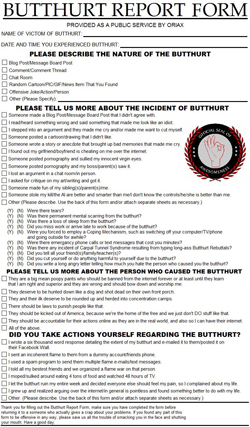

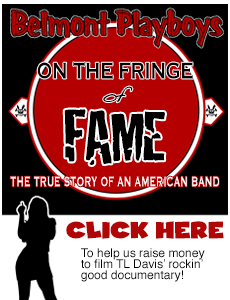


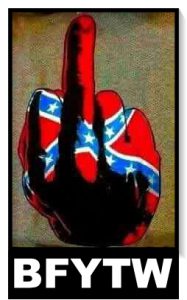
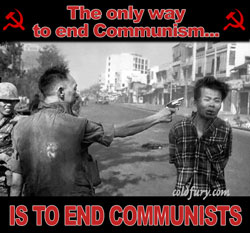



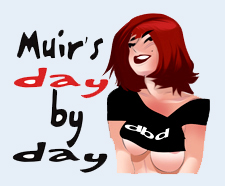
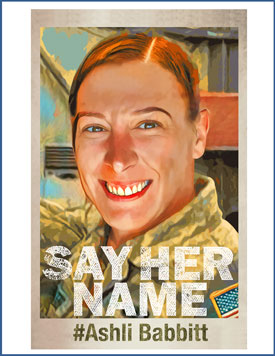
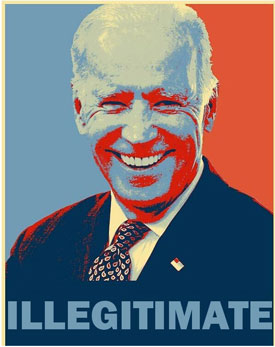
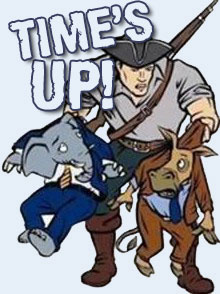

 - Entries
- Entries
New country is homo Nas X
I Sang Dixie
Girl, you taught me how to hurt real bad and cry myself to sleep
You showed me how this town can shatter dreams
Another lesson ’bout a naive fool that came to Babylon
And found out that the pie don’t taste so sweet
Now it’s guitars, Cadillacs, hillbilly music
And lonely, lonely streets that I call home
Yeah, my guitars, Cadillacs, hillbilly music
It’s the only thing that keeps me hangin’ on